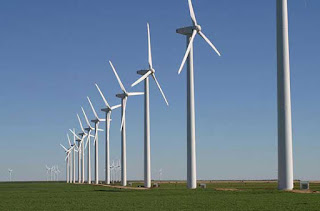A Texas region containing four of the world's largest wind farms showed an increase in land surface temperature over nine years that researchers have connected to local meteorological effects of the turbines.The land surface temperature around the west-central Texas wind farms warmed at a rate of .72 degrees Celsius per decade during the study period relative to nearby regions without wind farms, an effect most likely caused by the turbulence in turbine wakes acting like fans to pull down warmer air from higher altitudes at night, said lead author Liming Zhou at the University of Albany, State University of New York.
The results were published in the April 29 issue of Nature Climate Change. Zhou and colleagues studied land surface temperature data ranging from 2003 to 2011, from the MODIS (Moderate-resolution Imaging Spectroradiometer) instruments on NASA's Aqua and Terra satellites.Land surface temperature measures the temperature of the Earth’s surface itself, as opposed to the air temperature readings used in daily weather reports. Across a broad landscape, land surface temperature depends closely on the land cover type and nature of the surface. In specific locations, land surface temperature varies widely from day to night while air temperature varies within a smaller range.
The warming observed by MODIS mostly occurred at night. In the Texas region studied, the land surface temperature after sunset typically cools faster than the air temperature. But as the wind turbines continued to turn, the movement brought warmer air to the surface and thus created a warming effect compared to non-wind farm regions. The researchers expected to see the reverse during the day a slight cooling effect but the data instead showed a small warming or negligible effect in daytime.

No comments:
Post a Comment